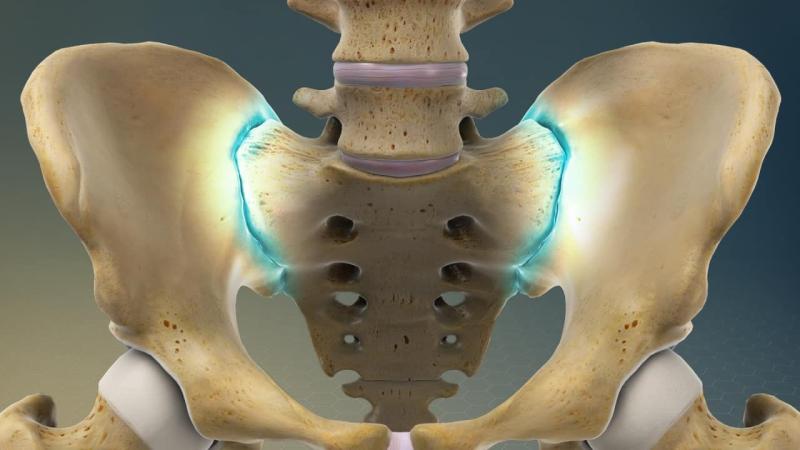Sacroiliac joint pain is a common cause of lower back pain that often goes undiagnosed. The sacroiliac joints connect the sacrum to the pelvis and help stabilize the spine. Any irritation or injury in these joints can lead to debilitating pain in the lower back and hips. Sacroiliac joint fusion is an emerging minimally invasive surgical technique that is providing much needed relief for sacroiliac joint pain sufferers around the world.
Anatomy And Function Of The Sacroiliac Joints
The Sacroiliac Joints are two large joints located on each side of the sacrum bone at the base of the spine where it connects to the pelvis. Each sacroiliac joint is comprised of the sacrum and ilium bones held together by fibrocartilage and ligaments. These joints serve several important functions in the spine and pelvis. They help transfer weight from the upper body to the lower extremities and allow for mobility between the sacrum and pelvis during walking, running, and other activities. Any disruption in the sacroiliac joints can lead to pain and limitation of movement.
Causes of Sacroiliac Joint Pain
There are several potential causes of sacroiliac joint pain, including traumatic injuries from falls, motor vehicle accidents, or heavy lifting. Overuse injuries from activities like running can also irritate the joints over time. Degenerative changes in the joints due to aging are another common cause of pain. In some cases, the exact cause cannot be identified and the condition is labeled as sacroiliac joint dysfunction. Without proper diagnosis and treatment, sacroiliac joint pain can persist for years and greatly impact quality of life.
Diagnosis of Sacroiliac Joint Problems
Accurately diagnosing sacroiliac joint dysfunction can be challenging as the symptoms often mimic other spinal conditions. Doctors will perform a thorough physical exam focusing on areas of tenderness over the sacroiliac joints and stress tests like the Gaenslen’s test to isolate sacroiliac joint movement. Imaging studies like plain X-rays, CT scans, and MRI may reveal abnormalities in the joints. Sacroiliac joint blocks using local anesthesia are also used as both a diagnostic tool and potential long-term treatment. Proper diagnosis is important to identify sacroiliac joint pain and rule out other potential sources.
Non-Surgical Treatment Approaches
Conservative treatments are usually tried first for sacroiliac joint pain and include rest, anti-inflammatory medications, steroid injections, and physical therapy. Strengthening and stretching exercises are aimed at stabilizing the sacroiliac joints and improving mobility. Bracing or taping the pelvis and sacroiliac joints may also provide temporary relief. If conservative treatments fail to control symptoms over time, sacroiliac joint fusion surgery may be recommended.
Sacroiliac Joint Fusion Surgery
Sacroiliac joint fusion is a minimally invasive surgical procedure to permanently stabilize dysfunctional sacroiliac joints affected by arthritis, injury or other causes of pain. The procedure involves placing specialized implants made of titanium or porous materials into the joints to fuse them into a fixed position. This removes painful motion and micro-instability which is believed to be the source of pain for many patients.
Surgeons first perform a small incision either above the joint through the abdomen or in the buttock area. Using fluoroscopy for image guidance, implantable screws, rods or cages are then inserted transversely or laterally across the joints. In some techniques, bone graft material may also be placed to permanently fuse the joint over several months. Post-operatively, patients undergo physical therapy to regain mobility while the fusion heals. Success rates for reducing pain and improving function have been reported to be over 80% based on long term studies.
Global Impacts of Sacroiliac Joint Fusion
Over the last decade, sacroiliac joint fusion has become a mainstream treatment around the world for those suffering from debilitating sacroiliac joint pain. Advances in minimally invasive techniques have made the surgery much less traumatic compared to previous open approaches. Healthcare providers globally are gaining experience in accurately diagnosing and treating this condition. As the baby boomer population ages, the demand for sacroiliac joint fusion to address acute injuries or degenerative joint changes is expected to rise substantially. Ongoing implant innovations and long term data collection will help further optimize outcomes. Sacroiliac joint fusion is having tremendous impacts on improving quality of life for people dealing with chronic sacroiliac joint pain worldwide.
In conclusion, sacroiliac joint pain affects millions globally and often goes unrecognized as a cause of lower back symptoms. Advances in minimally invasive sacroiliac joint fusion provide a promising surgical solution when conservative therapies fail. With greater awareness and improved diagnosis, more patients will have access to pain relief through this effective treatment approach. Continued research will help further advance sacroiliac joint fusion techniques and ensure positive outcomes for sufferers around the world.
Get more insights on this topic: https://www.trendingwebwire.com/what-is-sacroiliac-joint-fusion/

